Verdict
Our rating reflects the fact that the higher-end, automatic car we’ve driven here isn’t likely to be the sweet spot in the new C4’s range; for that you’d save the cash and stick to a manual gearbox, or choose the electric version as a company car and revel in the tax breaks. But even so, Citroen’s new offering feels like a very worthy new rival for the Golf and Focus. It’s practical enough, well specced for the money and very comfortable, as well as being just that bit different from the norm.
Citroen had a fairly low bar to rise above when it came to the new C4 - because the outgoing model was a vehicle that took average anonymity to astonishing heights. From the moment it appeared, the old Golf/Focus rival looked hopelessly out of kilter with market trends and Citroen’s own, boldly styled line-up. And so it proved.
But here is the all-new C4 - and it’s a rather striking thing. We’ll leave you to form your own judgement on how effective the switch to a coupe-crossover profile is, let alone the complex bodywork creases (particularly the pinch around the base of the C-pillar), but suffice it to say that this C4 will provoke a reaction. And that’s more than you could say for its predecessor.
- SEE MORE Best hatchbacks to buy 2020/2021
The novel approach doesn’t end there because under it all sits Groupe PSA’s CMP platform - the smallest of the company’s architectures, as used in the likes of the Peugeot 208 and Vauxhall Corsa. Citroen has taken a simpler, and presumably cheaper base, it would seem, and then stretched the wheelbase to the max to support a family car instead of a supermini.
Even so, there are benefits to CMP that are not presently offered by PSA’s larger, more conventional family car platform, EMP2. The smaller structure has been designed from the ground up to support combustion engines and pure-electric powertrains - so the C4 bypasses the whole plug-in hybrid scenario and goes straight to being offered with petrol, diesel and battery-electric propulsion.
There’s a single petrol engine - PSA’s familiar 1.2-litre three-cylinder Puretech - but it’s offered in three states of tune, with 99bhp, 128bhp and 153bhp. The entry point and range-topper are available as a manual and automatic only respectively, while the middle unit - the engine we’re driving here, in the French equivalent of the range-topping trim level - can be had with a choice of transmission. In our case, we’re driving the eight-speed automatic.
Diesel still plays a role in the line-up, thanks to a 1.5-litre four-cylinder motor producing either 108bhp (manual) or 128bhp (automatic). And as for the BEV, it’s badged e-C4, gets a 50kWh battery for a range of 217 miles, and a single front-mounted electric motor producing 135bhp. That’s enough for a 0-62mph time of 9.7 seconds - although just as relevant will be the car’s 100kW DC charging capability, which means it can be taken from zero to 80 per cent of battery capacity in half an hour.
Government EV push notwithstanding, Citroen reckons that combustion-engined C4s will account for at least four fifths of sales for the foreseeable future. And that puts this car in front of some very serious rivals - cars like the latest SEAT Leon and Skoda Octavia, not to mention the VW Golf and Ford Focus, as well as closer competitors on body style like the Toyota C-HR.
Citroen may well suggest that buyers after ultimate practicality aim for a C5 Aircross but in truth, the C4 probably has enough spaces for most uses. There’s enough knee and legroom for four six-footers to sit in reasonable comfort, and a deep scallop in the rear roof means that those in the back seats should have a fair amount of headroom as well.
The boot capacity, meanwhile, is 380 litres - whether your C4 is petrol, diesel or electric - and there’s an adjustable boot floor that allows you to prioritise a flat load bay or outright spaces. That outright space isn’t a match for the Octavia’s load bay but then, nothing else in this class really is. So consider the Citroen pretty much as spacious as a Golf or Focus and you’ll be on the money.
Of course, Citroen is trying to offer something different from those cars with the novel choice of body style. Citroen’s positioning of the car is clearer once you get on the road - particularly if, as was the case with our test drive, your initial miles are on low-speed urban streets. Every C4 will get the company’s Progressive Hydraulic Cushions - in effect, hydraulic dampers instead of regular bump stops - in a bid to deliver more comfort than rivals.
We haven’t been entirely convinced by this system’s merits in early offerings like the C5 Aircross - but the C4 seems to be the most effective implementation yet. Around town, the car has a genuine softer edge than most conventional family hatchbacks, filtering out scarred surfaces and cat’s eyes, and dulling the impacts over speed humps. Only the very deepest potholes take the system beyond its limits, to the point where a thud is transmitted through to the cabin.
It doesn’t exactly come undone at higher speeds, either; motorway cruising is extremely comfortable and while the C4 does take a second stab at settling after crests on fast A-roads, it doesn’t get unruly unless you really start misbehaving.
Just understand, of course, that there’s no discernible attempt to be what anyone would call ‘dynamic’. The steering is light, pretty vague around the straight ahead and entirely uncommunicative. And even if you do get the C4’s nose tucked into an apex, you’ll find a decent amount of body roll and understeer by mid-corner.
This sounds negative but it’s just an observation; on the whole, the C4 feels like a car that has been unashamedly focused on comfort instead of agility. And plenty of people are likely to find little wrong with that.
The 128bhp three-pot engine has some typical grumble once you head towards 3,000rpm but you’ll rarely need to do that, thanks to a reasonable amount of low-end punch. We’d still prefer a manual gearbox with it, mind; the auto shifts sweetly enough but we suspect it would be that little bit more comfortable with life when paired with the most powerful petrol motor.
Once you’re cruising the engine settles down nicely; it’s drowned out easily by tyre roar from the 18in wheels beneath, and some noticeable wind noise from around the side mirrors.
Inside, the C4 isn’t quite a match for the best in the family-car class on perceived quality, but it’s respectable. There are relatively few soft-touch materials, beyond a few strategic chunks of padded fabric, but the harder plastics are at least finished in pleasing textures, so nothing directly in your line of sight looks too cheap - provided, that is, that you appreciate the piano-black plastics that abound in several key areas.
The dashboard layout itself is a mixture of gains and losses. At last, Citroen has moved away from having the heating controls buried in the depths of the infotainment system, so you get simple, easy-to-use rotary switches instead.
On the other hand, there’s a complex area ahead of the front passenger seat which comprises a conventional glovebox, a slide-out tray to store a tablet PC, and then a further extendable mount designed to allow the screen to be viewed by the occupant. It can’t have been cheap to engineer, this set-up - the damping on the mount’s mechanism alone feels the equal of anything else in the vehicle, frankly - and it doesn’t really affect day-to-day functionality, but we’d query how many people will actually want to use it.
Still, there are more immediately useful areas in the centre of the dash, with a wireless charging pad for smartphones and a grippy tray beneath it in case you want to hook your handset up with a cable instead.
You may well want to do this because even when it’s been shorn of responsibility for heating and ventilation controls, Citroen’s infotainment system isn’t the easiest to use. But of course, you get both Android and Apple smartphone compatibility, along with USB-A and USB-C ports.
Citroen isn’t mucking around on kit lists with the new C4, in fact. The entry point, Sense, starts at £20,990 and includes LED headlights, 18-inch alloys, rear parking sensors, dual-zone climate control and the 10-inch touchscreen infotainment system. We’re not sure we’d need much more, frankly.
Sense Plus adds a head-up display, a rear parking camera, electric folding door mirrors and an auto-dimming rear-view mirror - as well as the aforementioned tablet mount.
Shine starts from £26,390 and brings rear privacy glass, front parking sensors, adaptive LED headlights and extra safety kit. And the range-topping Shine Plus gets that wireless smartphone charging pad, leather upholstery, heated front seats and a premium sound system with a subwoofer.
Of course, most retail customers will be focused on the monthly figures - and the early signs are reasonably positive on that front. Citroen is already throwing in £1,800 towards deposits so if the customer adds £2k, a C4 like our test vehicle will cost around £355 a month on a three-year, 10k-miles-per-year deal. A dual-clutch petrol Golf on similar terms (offering more power but less standard kit) would cost around £70 a month extra.
| Model: | Citroen C4 PureTech 130 S&S EAT8 Shine Plus |
| Price: | £26,590 |
| Engine: | 1.2-litre 3cyl turbo petrol |
| Power/torque: | 128bhp/230Nm |
| Transmission: | Eight-speed dual-clutch auto, front-wheel drive |
| 0-60mph: | TBC |
| Top speed: | 130mph |
| Economy: | 44.7-50-3mpg |
| CO2: | TBC |
| On sale: | Now |
from Sitewide RSS feed https://bit.ly/33XuOcF
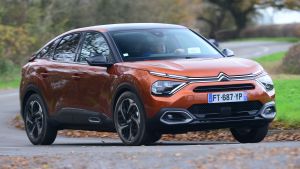
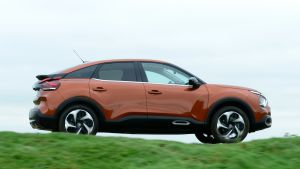
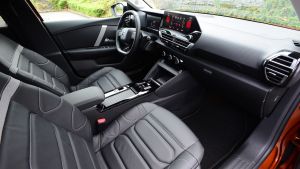
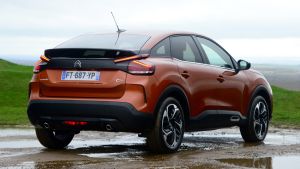
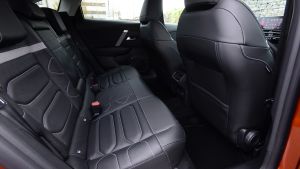
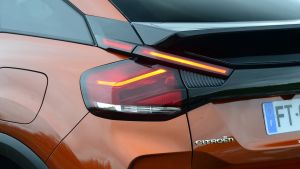
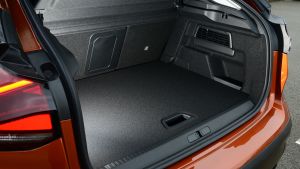
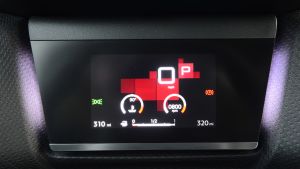
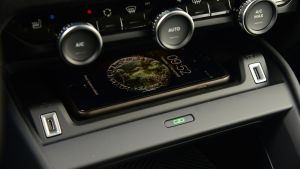
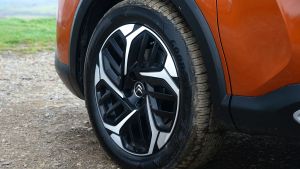

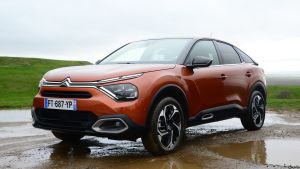
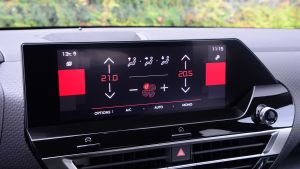


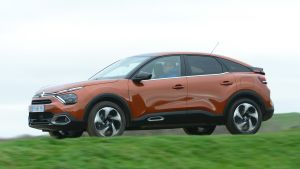
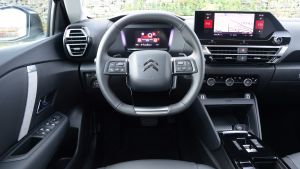
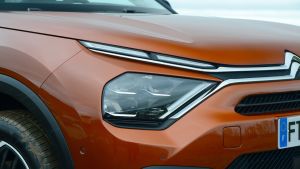
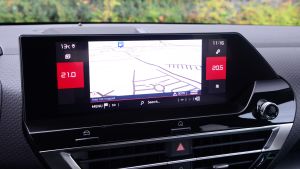
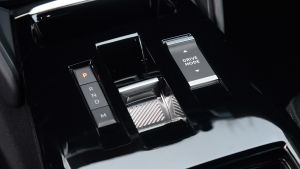
Comments
Post a Comment